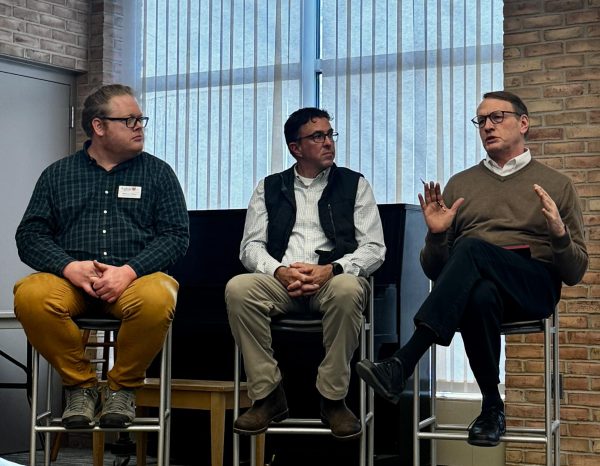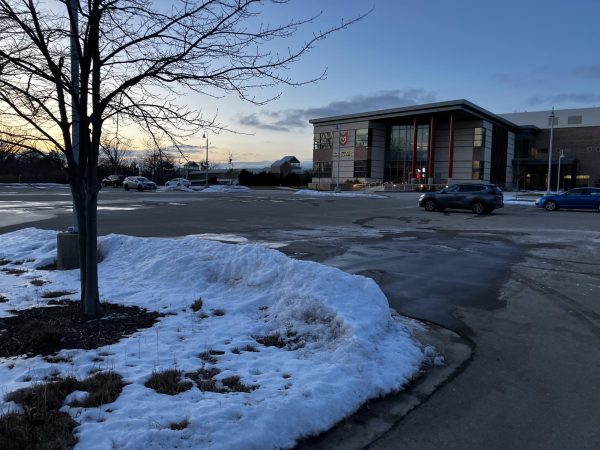Opinion: Michigan road system in need of TLC
Speed limits are a common debacle in Michigan. This year, the speed limit of 600 miles of highway was raised from 70 to 75 miles per hour. This change came despite the continual call of pedestrian safety advocates for lower speed limits in urban districts. Do speed limits make a difference? It seems drivers still attempt to drive as fast as possible without being the subject of a traffic stop. In a survey from Purdue University, over 80 percent of Midwestern drivers believe that driving 10 mph over the speed limit does not impact the safety of other drivers or pedestrians. Is there hope of curbing speeding in Michigan?
As it turns out, travel speeds are dictated by far more than the signs that dot the sides of city streets. Ultimately, simply posting lower speed limits will not change Michigan’s speeding epidemic. Most major roadways and highways in the United States are designed for “free-flow travel,” meaning that cars will be able to stay at the designed speed limit of the roadway so long as the total number of vehicles stays below the designed volume of the roadway. Obstacles are mitigated in “free-flow” environments, and lanes are straightened to ensure that minimal braking and congestion occurs.
The roadway is designed to reduce the number of decisions the driver is required to make, whether braking, slowing, or maneuvering to avoid collisions. This can include reducing the number of crosswalks, eliminating curves, and limiting the number of non-vehicle commuters along a roadway. Street corners are given wide radii to ensure fluid flows of traffic through intersections. This “free-flow” pattern is built for speed and the easy movement of vehicles, but is often promoted in the name of traffic safety.
The most important change made to promote “free-flow” traffic, and which subsequently sped up traffic along American roadways, was the widening of vehicle lanes. For several decades after the inception of the Interstate Highway System in the late 1950’s, highway lanes were designed to be 10 feet wide and urban traffic lanes were to be a maximum of nine feet wide. This can be seen on older highways in Grand Rapids, including US-131, one of the nation’s oldest dedicated freeways. Over time, under the assumption that wider lanes made for safer vehicle travel and lessened traffic on highways, lanes were widened to 12 feet on freeways. This thinking was later applied to major streets in cities, and soon virtually all state-owned roadways and major city-owned roadways were expanded to include 12-foot lanes. In Grand Rapids, most main roadways have 12-foot widths. There have also been higher vehicle accident rates since 1980.
However, this thinking fails to take into account the fact that human psychology and decision-making are influenced by the surrounding environment. While two feet in a lane or an additional four feet of curb radii at a corner can seem like negligible additions, they can easily lull a driver into believing in improved safety. This perceived safety arises from the lack of proximity to obstacles and objects such as parked cars and trees, and the feeling that the vehicle has room to “miss.” With wider roads, drivers make fewer immediate decisions, causing a lack of alertness and decreased safety along roadways, though the opposite is assumed.
Studies from the conservative Midwest Research Center and the nationally-assembled Transportation Research Board have both come to the same conclusion of narrower lanes reducing traffic accidents, contrary to the hypotheses made by those conducting the studies. However, as we continue to change design standards to accommodate “free-flow” traffic and higher speeds, traffic deaths in Michigan continue to increase.
For example, traffic stops for speeding occur far more on the 12-foot-wide lanes of M-6, along the southern edge of Grand Rapids than along the narrower lanes of Interstate 196 in Kent County. The highest rates of accidents for vehicles and pedestrians occur along Michigan Avenue, where 12-foot lanes have been implemented. The lowest accident rates in the City of Grand Rapids can be found on roadways with “yield-flow” traffic patterns, where both directions of traffic overlap on quieter streets.This pattern requires drivers to remain alert and maintain slower, safer speeds.
Streets are a public space that we engage with every day. They have been used for decades as places to funnel cars through instead of places to inhabit and safety travel along. It will take more than marketing campaigns and doubling down on current design strategies to stop speeding crimes and traffic deaths in Michigan.
Narrowing traffic lanes, placing more trees and sidewalks, eliminating long stretches of wide, straight roads in cities and adding more comprehensive infrastructure for pedestrians and bicyclists will actually slow drivers down and reduce accidents along American streets. Applying street design, the mathematics of traffic engineering, and human psychology can help prevent speeding while making streets and highways safer for all users.






